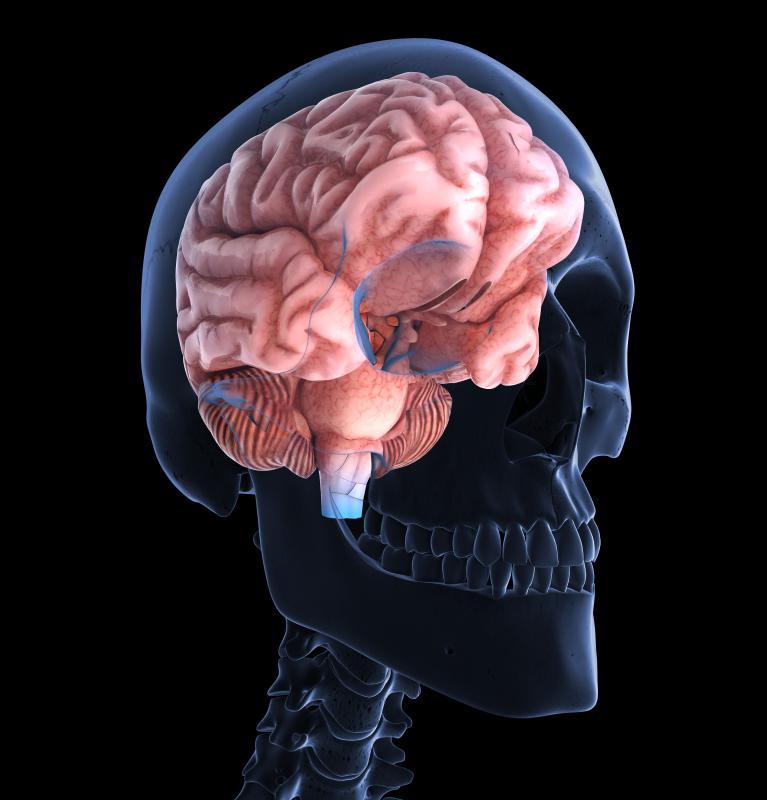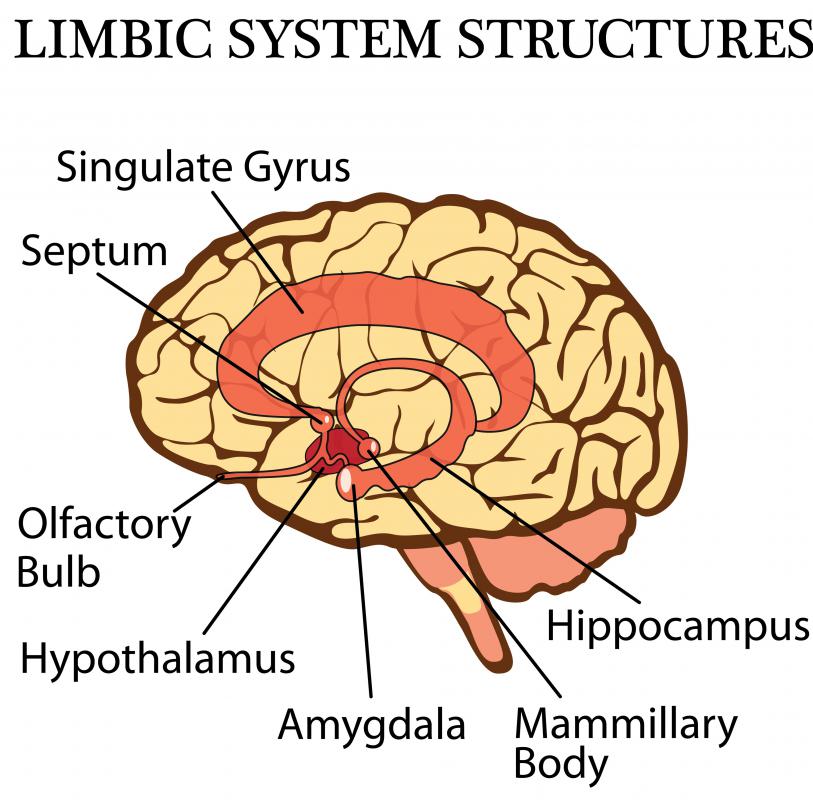At WiseGEEK, we're committed to delivering accurate, trustworthy information. Our expert-authored content is rigorously fact-checked and sourced from credible authorities. Discover how we uphold the highest standards in providing you with reliable knowledge.
What are the Different Brain Parts and Functions?
The human brain can be broken down into many different brain parts and functions. Most people have heard of the left and right hemispheres of the brain, but they are only part of the cerebrum. There are actually three main sections of the brain: the hindbrain, midbrain, and forebrain, and they are responsible for most of what humans say, do, think and feel. All of the brain parts and functions work together to process information.
The largest and arguably most important of the brain parts and functions is the cerebrum, which is part of the forebrain and is responsible for thought and action. The cerebrum is further broken down into four lobes. The frontal lobe is associated with reasoning and problem solving. The occipital lobe is responsible for processing vision. The parietal and temporal lobes are associated with movement and auditory processing, respectively.

The thalamus and hypothalamus lay between the forebrain and the midbrain, and are usually considered to be part of the forebrain. The thalamus helps process stimulus and sensory information. The hypothalamus helps control metabolism as well as some aspects of the nervous system. The forebrain also contains the limbic system, which is comprised of the amygdala and hippocampus, which both assist with memory and emotion.

The midbrain is comprised of the tectum and tegmectum. It is relatively small at about three quarters of an inch (2 cm), but it helps connect the forebrain to the spinal cord. The tectum is the “roof” of the midbrain, while the tegmectum is the “floor”. Together they process visual and auditory stimuli.
The hindbrain is comprised of the cerebellum, pons and medulla oblongata. The cerebellum mostly helps control motor movement, while the pons and medulla oblongata together help assist a wide spectrum of functions, from respiration and blood pressure to vomiting and bladder control. The midbrain, pons and medulla oblongata together make up what is known as the brainstem, which connects to the spinal cord.

With so many brain parts and functions working together, it is easy to see how problems can occur. The study of the brain parts and functions is part of neuroscience, or the study of the nervous system. Psychiatry and psychology are both fields of study which involve disorders of the mind and the way it processes information. All are highly detailed and complex, as there are many mysteries of the human brain yet to solve.
AS FEATURED ON:
AS FEATURED ON:













Discuss this Article
Post your comments